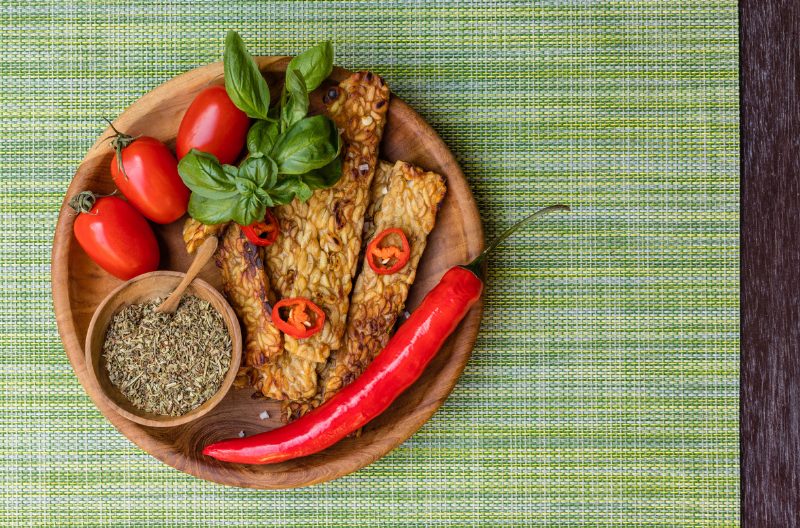Ditching meat doesn’t mean that meal times have to be dull and boring. Sure, there once was a time, where a standard “vegan meal” would be a sad piece of lettuce and a few slices of tomato. Thankfully, those days are long gone. With the staggering amount of exciting vegan meat substitutes out there, you should have no problem making temptingly good dishes for yourself. Let’s take a look at how you can get started now by diving into the world of meat alternatives.
Why Are Meat Alternatives So Popular?
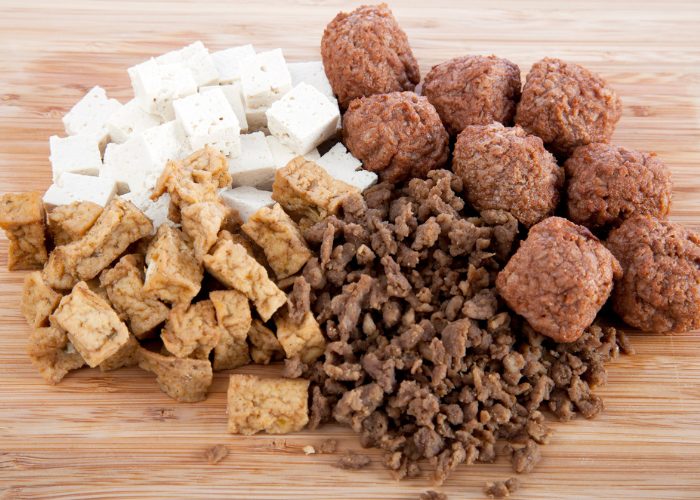
Vegan food has become one of the most popular eating trends of modern times. Whether people are making the change for ethical reasons or for their health, the data shows that the types of food which people eat are seeing a major transformation.
In fact, according to takeout marketplace, GrubHub, the trend of people choosing vegan or “plant-based” food has reached an all-time high.[1] However, as anybody who has tried to cut meat out of their diet will know, it’s often times easier said than done.
Many of the recipes that we have grown up with – from stews to yummy pasta dishes – rely heavily on meat as their main ingredient. While people are happy to go #MeatFree, this problem could ultimately hold them back. During the transitional period from a meat-eater to a vegan, you may find this especially difficult. Luckily, there’s an answer to this dilemma.
Vegan meat substitutes are on the rise and there’s now a whole load available in grocery stores around the country. Using these alternatives means that former omnivores can enjoy the food and recipes that they love without too much trouble. Let’s face it, it hardly takes Einstein to figure out why so many people love cooking with vegan substitutes.
What Are the Best Meat Substitutes for Vegans?
Whether you’ve just become a vegan or simply want to cut back on your overall meat consumption, finding alternatives is an absolute must. Sure, going “cold turkey” (pun 100% intended!) can be strikingly difficult. However, when you use vegan meat substitutes, you should find that you can still eat a wide range of dishes and meals.
If you don’t know your tofu from your seitan, you’ve come to the right place. While there are loads of vegan meat substitutes out there, you need to understand which is right for you. Each of these meat alternatives need to be cooked in a specific way and offer unique nutritional benefits. So, let’s take a moment to look at some of the best vegan substitutes.
Tofu
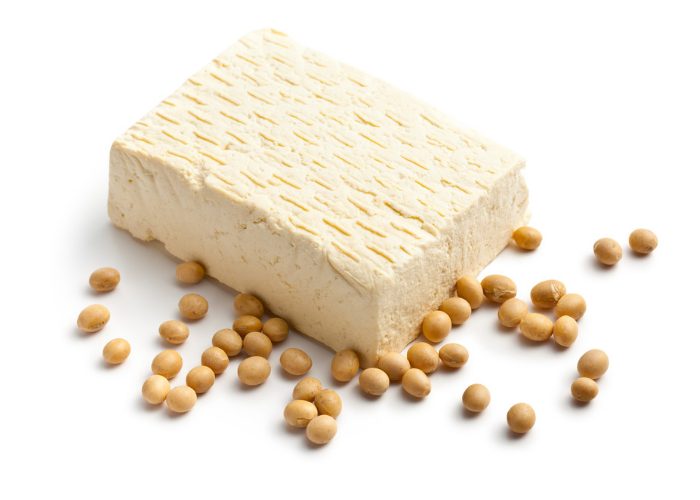
- Similar to: Fish or chicken
- Nutrition (per 100g): 76 calories, 4.8g fat, 8g protein
What is tofu?
Made from condensed soybeans, tofu is one of the best vegan meat substitutes. This ingredient has a soft and chewy texture and can be used in a wide variety of ways. While it doesn’t have a taste that is particularly similar to meat products, its biggest advantage is that it soaks up flavor. That means that you can use it in the place of many different ingredients, including chicken, fish, and even turkey.
As though that weren’t enough to get you on board, you should know that this is one of the healthiest meat alternatives. It’s low in fat and saturates and 100g of the stuff contains as little as 91 calories.[2] If you’re hoping to lose some weight, you could find that replacing meat with this alternative is a helpful lifestyle hack.
What’s more, research from the American College of Cardiology found that a compound in soy products, such as tofu, can help to lower blood pressure.[3] High blood pressure is linked to a range of illnesses from heart disease to a high risk of stroke too. With that in mind, you could find that adding this versatile product to your everyday diet could make a huge difference to your overall health and wellness.
How should you cook tofu?

Tofu gets a bad rap! Many people simply have no idea where to start when it comes to cooking it, so don’t bother at all. The truth of the matter, though, is that it doesn’t have to be difficult. There are a few steps you have to follow if you want to ensure that your tofu tastes as delicious as can be. Here’s what you need to know:
- Step one: Press it
If you buy silken tofu, you can go right ahead and start using it. However, before you think about using firm tofu, you have to press it to get rid of the excess juices that are inside it. You can get special tofu presses from many food stores but, if you don’t fancy splashing your cash, there’s a cheaper alternative. You could also use a weight and a couple of boards to press the tofu. Leave it between the boards with the weight on top for around four hours or even overnight. - Step two: Marinade it
Unless you buy flavored tofu, you will need to add something to it to give it that extra zing! Marinating it is an easy way to ensure that it’s full of flavor. You can whip up a quick sauce using lemon juice, chili flakes, and salt. Simple! Leave the tofu in the sauce for an hour or so before cooking to make certain that the flavor really infuses. - Step three: Cook it
When you have followed the above steps, it’s time to get cooking. There are many ways in which you can cook tofu. Baking it in the oven will give the product a chewy texture. You can also grill it, or if you prefer something a little crispier, you might want to shallow-fry it in a skillet.
What should you serve tofu with?
As we’ve already mentioned, tofu is one of the best meat substitutes for vegans as it can be used in a wide variety of ways. Put this stuff on a sandwich, serve it with some veggies, or throw it into a stir-fry meal. The ingredient goes well with Asian-inspired dishes too.
Jackfruit
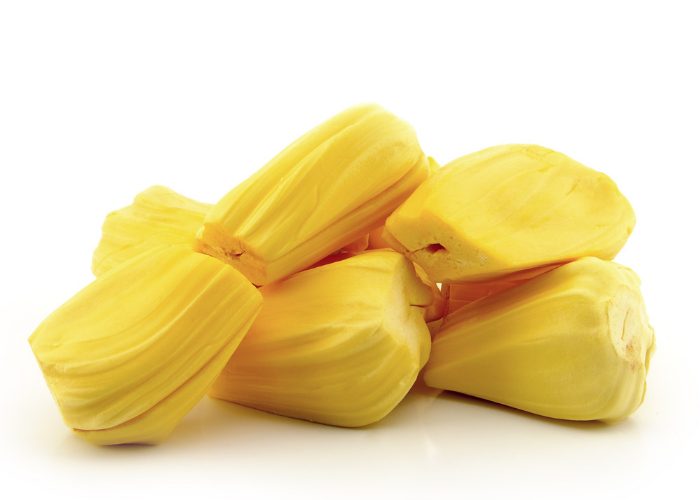
- Similar to: Pulled pork
- Nutrition (per 100g): 94 calories, 0.3g fat, 1.5g protein
What is jackfruit?
Originating in South India, jackfruit is one of the largest exotic fruits to come from the Moraceae plant family. Packed with fiber, nutrients, and a whole load of vitamins, it’s clear to see why some people believe that this is one of the most nutritious vegan meat substitutes. Plus, there are around 94 calories in 100g of jackfruit too, which means that it could be a great diet food.[4] With a subtle fruity taste, you can do a whole lot with it.
How should you cook jackfruit?

While you can use jackfruit in both sweet and savory dishes, one of the most common ways in which it is now used is as a “pulled meat” alternative. The stringy texture of the fruit’s flesh means that it is perfect for recipes in which you would usually include pulled pork or even pulled beef brisket. Here’s what you need to know:
- Step one: Pull the jackfruit
When you first get the jackfruit, it will be inside a hard skin. Take the time to remove the skin, which is relatively tough. Then, you need to deal with the flesh inside. Warning: It will be quite sticky! Pull it apart and cut it up so that it has the same texture as pulled meat. - Step two: Cook it
When you have created the right texture for you, you can begin cooking your food. One of the easiest ways in which you can cook jackfruit is to fry it in a skillet. You should add a sauce and plenty of flavors, such as garlic powder, chili powder, and salt to the mix. Alternately, you could put the jackfruit into an oven-ready pot and submerge it in a homemade barbeque or chili sauce before baking.
Pro Tip: If you’ve never cooked jackfruit before, you might want to cheat a little here. (We won’t tell if you don’t!) You can actually get tinned jackfruit that has already had the skin removed. All you need to do is drain the fruit when you open the tin and then cook with it. Often enough, you can even get jackfruit that has already been pulled into a stringy consistency too. Nothing could be simpler.
Seitan
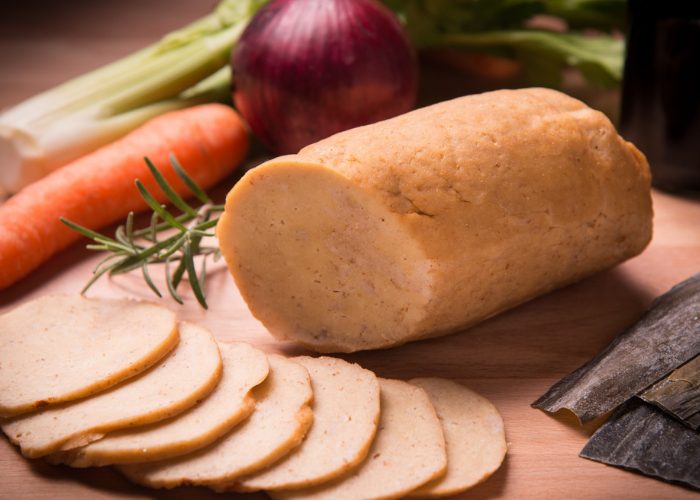
- Similar to: Beef
- Nutrition (per 100g): 370 calories, 1.9g fat, 75.2g protein
What is seitan?
Also known as vital wheat gluten, seitan is now one of the most popular vegan meat substitutes. It is actually made out of hydrated gluten, which is the main type of protein that you would typically find in wheat. To create this ingredient, you have to knead wheat flour with water, which creates gluten protein strands. After that, you rinse the mixture to get rid of the starch. Of course, you can buy this ingredient premade and use it right away.
Unlike some of the other meat alternatives we’ve mentioned so far, seitan has quite a high calorie-count, coming in at 370 kcal per 100g.[5] That means that it’s not advisable to eat this stuff in huge portions. However, it’s an excellent source of protein, with around 75% of the product consisting of vegan protein.[6] Since many vegetarians and vegans worry about where they will get this vital nutrition from, it could be worth adding it to your diet plan.
The fact that seitan is a dense and heavy product means that it is one of the most convincing vegan meat substitutes you can get. It literally looks and feels like meat, which is one of its major advantages. So, if you’ve recently become a vegetarian or vegan and find that you’re missing beef, this alternative should give you what you’ve been craving.
How should you cook seitan?

Seitan can be used in the place of meat products in most recipes. For example, if you’re making a slow-cooked stew that calls for slices of beef, simply replace them with slices of seitan instead. Alternately, you could grill slices of the meat alternative and put them on a sandwich instead of meat. As one of the most diverse meat substitutes, you should find that it’s straightforward enough to begin cooking with this product.
Pro Tip: Since seitan is fast becoming one of the most popular vegan meat substitutes, you can now get it in a whole variety of forms. From “steak style” seitan to “kebab meat” seitan, there’s a broad range of options out there. Should you buy one of these options, you will need to read the individual cooking instructions on the packaging.
Tempeh
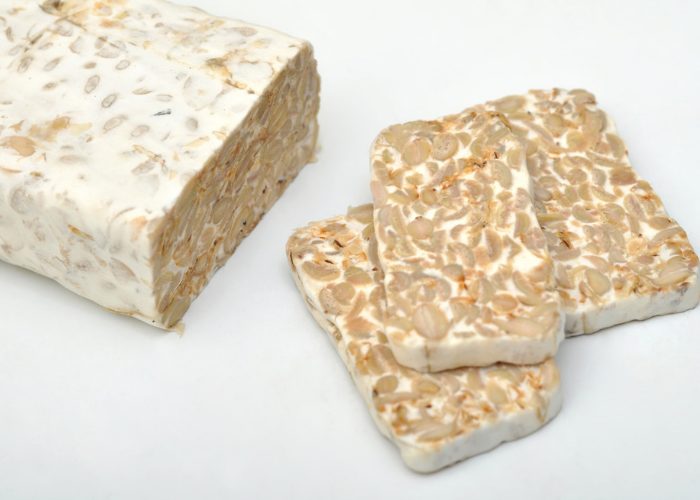
- Similar to: Fish, turkey, or chicken
- Nutrition (per 100g): 193 calories, 10.8g fat, 18.5g protein
What is tempeh?
Similar to tofu, the main ingredient in tempeh is soybeans. However, the process of creating this brand of vegan meat substitutes is slightly different. The beans are either fermented over time or broken down by microorganisms, before being tightly compacted. The result is a firm yet chewy substance, which can easily be used in the place of meat.
With around 193 kcal per 100g of tempeh, it’s not the most calorific meat substitute available on the market.[7] This is also one of the vegan meat substitutes that gives you a decent dose of protein, at around 18g per 100g serving.[8] You can also get nutrients including calcium, magnesium, and iron in this particular ingredient too.[9]
As an added bonus, you may also find that eating some tasty tempeh can help to support your digestive system and overall wellness. The fermentation process that creates this product also means that it is packed full of probiotics. Research has shown that probiotic bacteria can have a strikingly positive impact on your gut and digestive health.[10]
How should you cook tempeh?

Never cooked with tempeh before now? Well, you’re certainly missing out! This is one of the vegan meat substitutes that really excels when it comes to a range of dishes. There are a few different ways that you can cook it. Here are just three of the many ideas out there to get you started.
- Grilled
If you want to grill your tempeh, as you would bacon or any other thin meat, you might want to slice it up first. You can also marinade the ingredient to give it a little extra flavor. Heat some oil in a medium skillet and then place the slices directly into the pan. Turn regularly to make sure that it doesn’t burn! - Steamed
Surprisingly, this is one of the vegan meat substitutes that works well when steamed. This cooking method is relatively easy. First of all, you will need to chop your tempeh into small chunks or slices. Then, heat some water in a deep pan with a steaming pan on top. Put the tempeh into the top pan and cover. Bring the water to the boil and leave to simmer for around 10-15 minutes. Afterwards, you can enjoy the tempeh or pan-fry it for more flavor. - Stewed
Perhaps one of the most exciting things about tempeh is that it takes on the taste of other ingredients. For that reason, cooking it as part of a stew or chili is a wonderful way to get the most out of it. Simply break up the tempeh before you start cooking and put it directly into the stew broth to cook. This idea is best for slow-cook recipes, in which the stew is left to combine and heat for a matter of hours. Keep it slow and low!
Soya mince
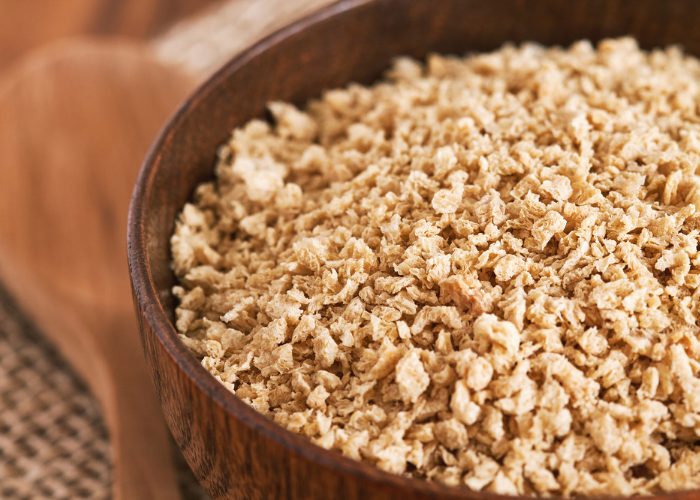
- Similar to: Minced beef
- Nutrition (per 100g): 310 calories, 2g fat, 51g protein
What is soya mince?
Soya mince is one of the most widely accepted vegan meat substitutes out there. As the name suggests, the product mainly consists of soybeans, although the full ingredient list will vary from brand to brand. Over the years, it has proved to be a popular ingredient with vegetarians due to its high protein content.[11]
It’s not just about the high-quality protein that soya mince has to offer, though. The meat alternative also offers you a broad variety of vitamins and nutrients, including high levels of fiber, essential amino acids, and isoflavones.[12] The latter has numerous benefits for our health as it can reduce the risk of heart disease and breast, lung, and prostate cancer. [13]
How should you cook soya mince?

It should come as no real surprise that you need to cook soya mince as you would mincemeat. You can get this meat substitute in frozen or fresh form. How long you cook the mince will depend on whether or not it has been frozen. Be aware that it may cook a little faster than mincemeat as it is not nearly as dense. This is one of the best vegan meat substitutes for Tex-Mex lovers as it works well in tacos, burritos, and chilis too.
Pro Tip: Not all soya mince products are created equal. If you’re new to using this particular ingredient, you may find that it pays off to look around and see what you can find. Some of the most popular brand on the market include Quorn, Fudco, and Granose. The flavor will differ slightly from product to product. Try a few until you find the one you love!
Legumes
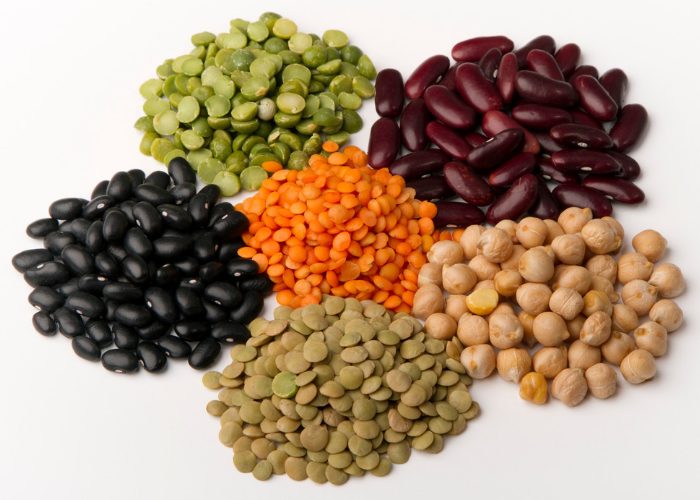
- Similar to: Burgers and mincemeat
- Nutrition (per 100g): 119 calories, 1.1g fat, 4.9g protein*
* Based on chickpea nutritional values; variable depending on legume type
What are legumes?
Legumes include a broad range of ingredients with which you should already be familiar. From beans and chickpeas, to lentils and even peanuts, this food family is as diverse as it is delicious. While these ingredients don’t necessarily mimic a single type of meat, they can often take the place of meat products in vegan recipes. That’s why, if you’re hoping to start living as a vegan, it’s worth getting to know what legumes have to offer.
Choosing to include a healthy dose of legumes in your diet will help you get the protein you need while keeping your intake of saturates low. That’s the reason that these ingredients always come up when people are talking about vegan meat substitutes. Sure, they may not “mimic” meat, but they can satisfy your cravings and work in most recipes.
Not only are these ingredients packed with an awesome amount of protein, but they also offer other health benefits. One study published in the JAMA and Archives Journals found that including legumes in your diet could help you to maintain stable blood sugar levels while reducing the risk of type 2 diabetes or a heart attack.[14] What’s more, the Institute of Food Science and Technology states that growing legumes is more ecologically sustainable compared to the breeding of animals.[15]
How should you cook legumes?

Needless to say, how you cook each legume depends on which it is. Popular choices include chickpeas, beans, and lentils. All of the above can be added to stews, curries, or chilis to bulk up the meal. Not sure what you should make with these ingredients? Here are a few cooking ideas to help you out.
- Taco fillings
Spiced beans or lentils make wonderful taco fillings! All you have to do is fry up some peppers and onions, pour over some spiced tomato passata and then add the beans or lentils to the mix. Be sure to only use a little sauce with this recipe idea or you may find that the tacos are too wet to handle! - Curries
You could use chickpeas as the base of a tasty vegan curry. The ingredients will give your meal the substance and protein that it needs to be satisfying and delicious. Using an array of Asian spices, canned tomatoes, and coconut oil, you can whip up a curry dish that will please the entire family – even your kids! - Burgers
Of course, one of the things that many new vegans miss is the wholesome beef burger. Luckily, beans could be one of the easiest vegan meat substitutes here. You can use a range of beans and vegetables to create a burger-like patty. Then, simply fry the food in a pan or oven-bake it. Pop the patty in a bun, add some toppings and sauce, and enjoy! If you’d like a unique take on a burger, you could even try making a hemp seed burger. - Chilis and stews
Looking for a quick way to add some extra protein to your stew or chili? You might just have found it. Putting some beans or lentils into the sauce could be the way to go. Mixed beans often work well in chili con carne dishes, while putting some lentils in a vegetable stew will give it that oomph it needs. Try it for yourself!
Pro Tip: Legumes make perfect ingredients for “backup plan” meals! When you have nothing else in the house, you can fall back on these ingredients and be sure that they will offer you a nutritious meal. For that reason, it’s advisable to always keep some canned and dried legumes in your kitchen cupboard.
4 Tips for Using Vegan Meat Substitutes
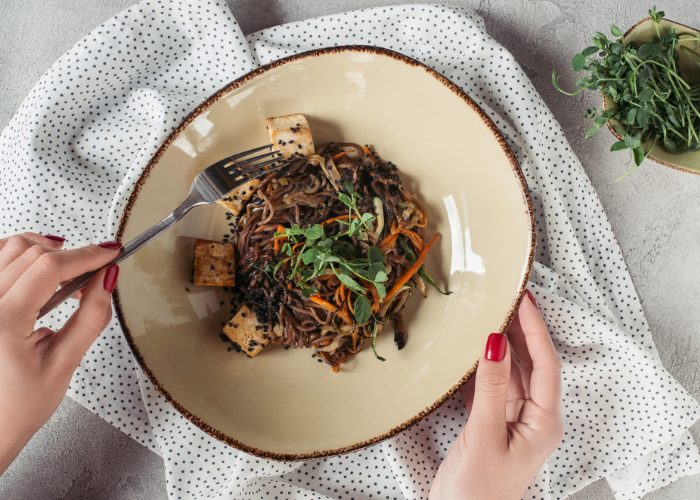
Now that you’re comfortable with some of the most popular vegan meat substitutes, let’s take a moment to look at some general tips. Before you dive right in and start cooking with these meat alternatives, here are some of the things that you might want to keep in mind.
- Always read the instructions on the label
While we’ve covered some of the major meat alternatives here and how to cook them, it’s important to realize that techniques may vary. If you’re using specific brands or a processed meat alternative, it’s crucial that you take a little time to read the instructions on the label of the packaging. It only takes a minute, after all! - Experiment with the recipes you already know
Should you already know how to cook a certain recipe using meat, now is the time to get a little experimental. For example, if you’re a pro at making a top-notch lasagna, you may want to mix things up and make a vegan version of the recipe. Replacing the mincemeat with soya mince is a simple swap. You will hardly notice the difference. - Try dishes at vegan restaurants
Are there any vegan restaurants or cafes in your area? If so, you might want to pay them a visit. One of the most effective (and quickest!) ways to learn about vegan meat substitutes is to have them cooked for you by a professional. Order meals that you usually overlook so that you get an idea of recipes you can try at home. - Keep a food and recipe diary!
Figuring out which vegan meat substitutes work for you is a process. You need to track it. Get yourself a plain notebook and keep a diary of how each recipe worked for you. If you have trouble cooking tofu for the first time, for example, write down what happened. The next time you give it a whirl, you can learn from your previous mistakes. Easy!
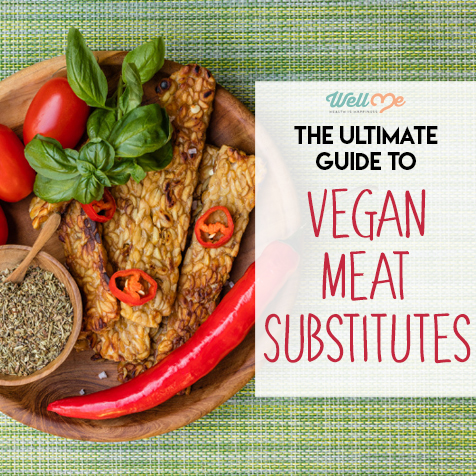
Conclusion
Do you feel ready to try some of these vegan meat substitutes for yourself? With any luck, we’ve given you the inside scoop on what to eat and how to eat it. Remember, you need to try a whole range of meat alternatives before you determine which you want to eat on a regular basis. Do a little research into each ingredient you discover and try cooking with it. You never know, you might find that some of your favorite dinner recipes are 100% vegan!
References
- [1] https://media.grubhub.com/media/press-releases/press-release-details/2017/Were-Halfway-There-Grubhubs-Mid-Year-Data-Analysis-Uncovers-the-Dishes-Dominating-the-First-Half-of-2017/default.aspx
- [2] https://nutritiondata.self.com/facts/legumes-and-legume-products/4408/2
- [3] ACC. https://www.acc.org/about-acc/press-releases/2012/03/25/15/19/soybeans_bp
- [4] https://nutritiondata.self.com/facts/fruits-and-fruit-juices/1930/2
- [5] https://nutritiondata.self.com/facts/cereal-grains-and-pasta/7738/2
- [6] Nutrition Data. https://nutritiondata.self.com/facts/cereal-grains-and-pasta/7738/2
- [7] https://nutritiondata.self.com/facts/legumes-and-legume-products/4381/2
- [8] https://nutritiondata.self.com/facts/legumes-and-legume-products/4381/2
- [9] Nutrition Data. https://nutritiondata.self.com/facts/legumes-and-legume-products/4381/2
- [10] https://www.ncbi.nlm.nih.gov/pubmed/11157344
- [11] https://www.ncbi.nlm.nih.gov/pmc/articles/PMC5793271/
- [12] https://www.ncbi.nlm.nih.gov/pmc/articles/PMC5793271/
- [13] https://www.sciencedirect.com/topics/agricultural-and-biological-sciences/isoflavones
- [14] https://jamanetwork.com/journals/jamainternalmedicine/fullarticle/1384248
- [15] https://fstjournal.org/features/focus-legumes

